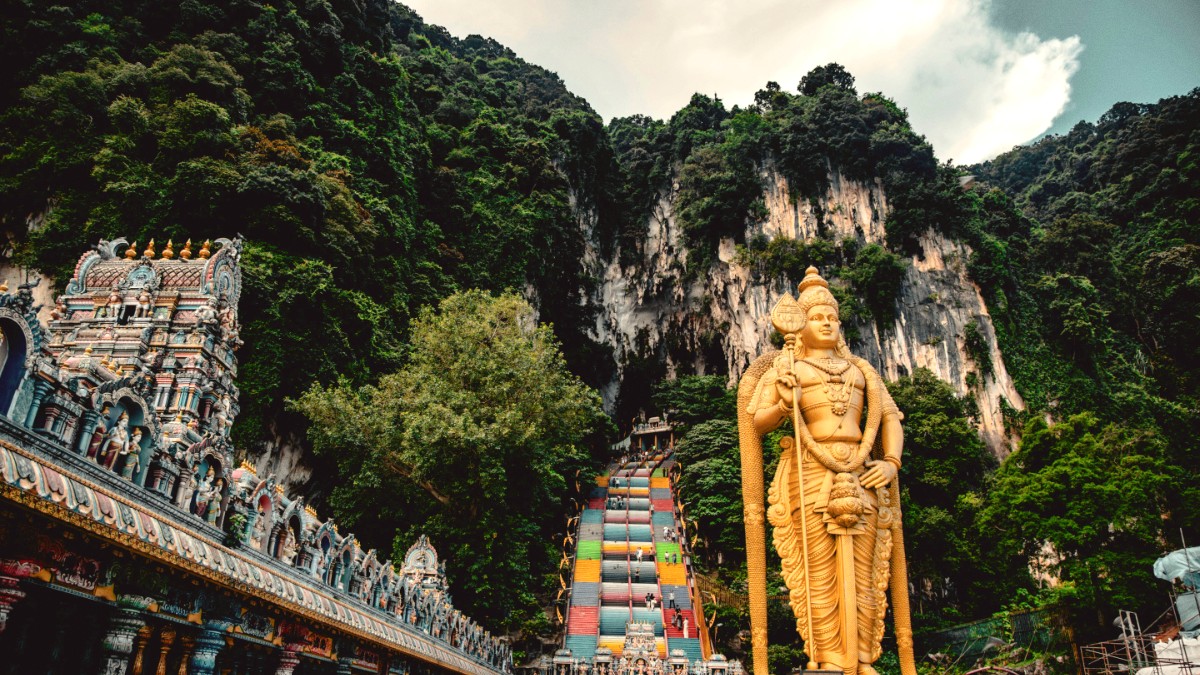
Malaysia
Discover diverse routes with varying difficulty levels, catering to different fitness levels.
The ascent of 272 colorful steps to the main Cathedral Cave is a moderate physical challenge. Pace yourself and take breaks.
Located near Batu Caves, FRIM offers various jungle trails, from easy walks to challenging hikes through dense rainforest. The Canopy Walk offers an elevated perspective.
For experienced hikers seeking a strenuous challenge, this ridge offers panoramic views. This hike requires permits, proper gear, and experience.
Be aware of the wild macaques. They are curious and can be bold, attempting to snatch food, drinks, or shiny objects. Do not feed them, and keep your belongings secured and out of their reach. Do not antagonize them.
Engage deeply with Malaysia's rich heritage through hands-on experiences and festive celebrations.
Many cultural centers and hotels (e.g., Malaysian Tourist Centre - MaTiC) display traditional Malay, Chinese, and Indian dances and music.
If your visit aligns (late January/early February), witnessing Thaipusam at Batu Caves remains an extraordinary cultural immersion. Hundreds of thousands of Hindu devotees undertake a pilgrimage.
More prominent in rural areas, these initiatives travelers a chance to stay with local families and participate in village life.
Hari Raya Aidilfitri marks the end of Ramadan. Deepavali (Diwali) is the Hindu Festival of Lights.
Learning a few basic Malay phrases makes your interactions smoother and is appreciated by locals.
Check local tourism calendars for festivals coinciding with your visit, offering unique cultural insights.
After exploring the bustling city and climbing the steps of Batu Caves, opportunities for relaxation and wellness refresh your body and mind.
Near Batu Caves, this local spot features natural hot water springs. It offers a rustic experience for soaking feet and relaxing.
Explore traditional Malay healing practices like Urut Melayu, often incorporating local herbs and oils. Traditional Chinese medicine and Indian Ayurvedic centers also exist.
Several yoga studios and wellness centers operate in Kuala Lumpur. For more extensive retreats, consider locations outside the city center.
Many hotels in Kuala Lumpur feature swimming pools, a refreshing escape from the heat.
Some luxury hotels boast impressive rooftop pools with stunning city views, a stylish way to relax.
Kuala Lumpur lacks beaches, but some hotels may have artificial beach areas or large resort-style pools. Coastal resorts are a short journey away.
Kuala Lumpur comes alive after dark, displaying a dynamic nightlife scene for various preferences. Plenty of options exist for enjoying the evening.
Changkat Bukit Bintang is the main district for nightclubs. TREC KL also offers a concentration of clubs for dancing.
Many hotels feature stylish rooftop bars with DJs and city views, a sophisticated nightlife experience.
Mamak Stalls: Many operate 24/7, a relaxed open-air setting for late-night food and conversation. Karaoke Lounges are also popular.
Changkat Bukit Bintang serves as the main bar district. Pub crawls, often organized by hostels, structure local nightlife experience.
Petronas Philharmonic Hall, within the Petronas Twin Towers, hosts classical music concerts by the Malaysian Philharmonic Orchestra and visiting international artists.
Some night markets, like Jalan Alor's street food section, operate until midnight or later, a lively atmosphere for late-night dining.
Souvenir recommendations include miniature pewter items, batik scarves, traditional crafts, local snacks, and spices. Kuala Lumpur is a shopping paradise with numerous mega-malls like Pavilion Kuala Lumpur and Suria KLCC for luxury and boutique shopping. Ethical shopping advises supporting local artisans and avoiding illegal products. Bargain respectfully at markets. Inquire about shipping options for large items and be aware of customs regulations.